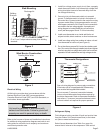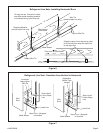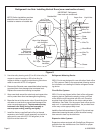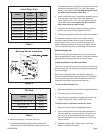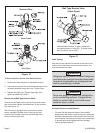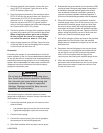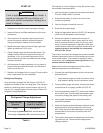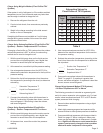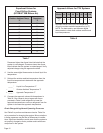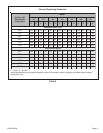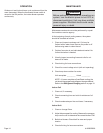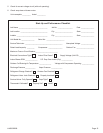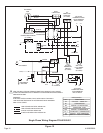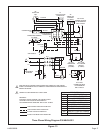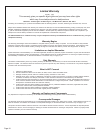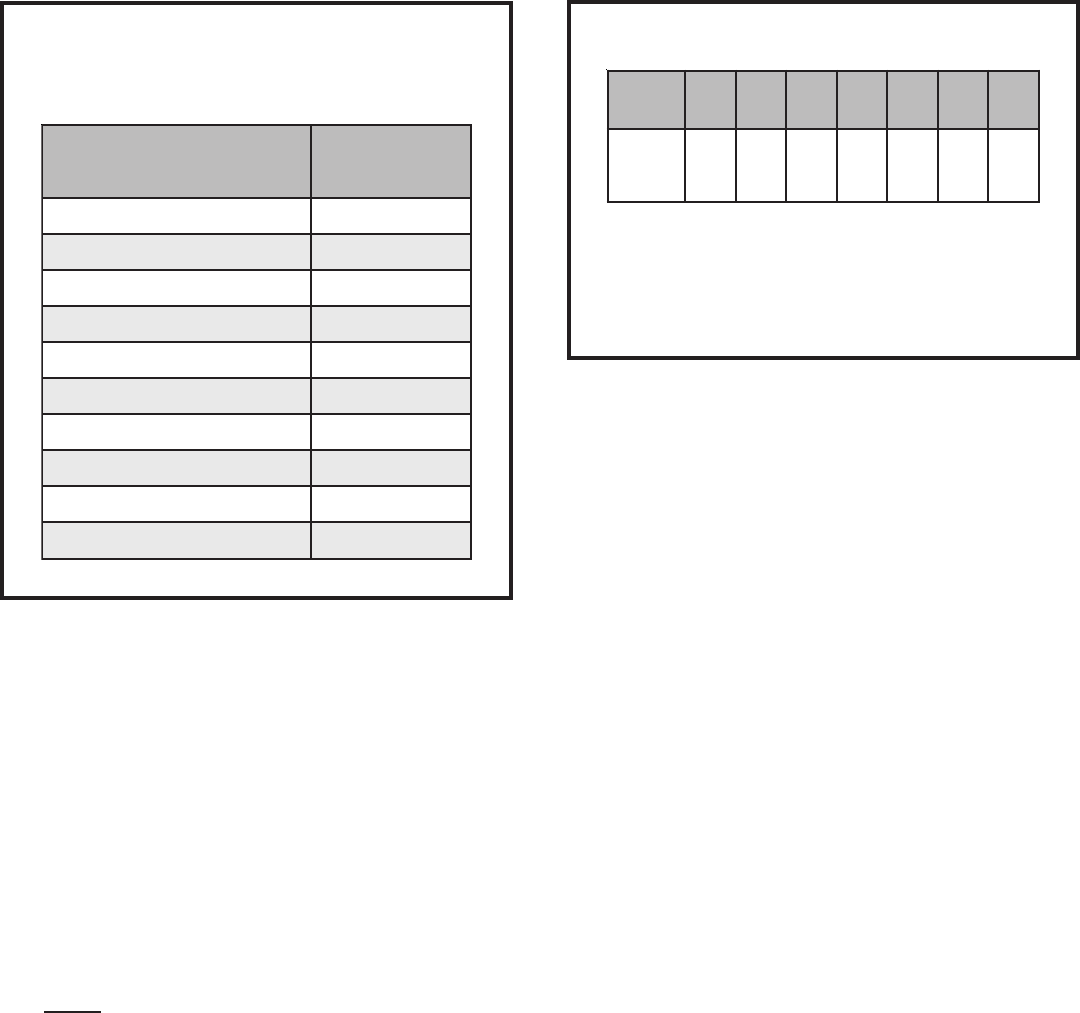
Page 12 # 48283B006
Pressures higher than those listed indicate that the
system is overcharged. Pressures lower than those
listed indicate that the system is undercharged. Verify
adjusted charge using the approach method.
4. Use the same digital thermometer to check liquid line
temperature.
5. Subtract the outdoor ambient temperature from the
liquid line temperature to determine the approach
temperature.
_____ ° Liquid Line Temperature °F
_____ ° Outdoor Ambient Temperature °F
_____ ° Approach Temperature °F
–
=
.pmeTtneibmAroodtuO
F°
taehrepuS
F°
0683
56 53
0703
57 62
0822
58 81
0921
59 8
0015
501 0
Superheat Values for
Fixed Orifice Systems
(80°DB/67°WB Return Air)
Table 7
Approach Values for TXV Systems
Approach value is the liquid line temperature
minus the outdoor ambient temperature (±1°F).
NOTE: For best results, use the same digital
thermometer to check both outdoor ambient and
liquid temperatures.
Table 8
ledoM 81- 42- 03- 63- 24- 84- 06-
.pmeT
F°
601119558
6. Compare the approach value with those shown in
Table 8. If the values to do not agree with those
provided in Table 8, add refrigerant to lower the
approach temperature or recover refrigerant from the
system to increase the approach temperature.
Check Charge Using Normal Operating Pressures
Use Table 9 to perform maintenance checks. Table 9 is
not a procedure for charging the system. Minor variations
in these pressures may be due to differences in installa-
tions. Significant deviations could mean that the system is
not properly charged or that a problem exists with some
component in the system.



